|
Summer has ended, but autumn brings its magic with mother nature’s dramatic foliage display, crisp “sweater” weather, and a season filled with apple picking, pumpkin carving, and grape harvests! With temperatures beginning to drop, I’m focusing on red wines a bit more. Of course, I’ll be drinking white and rosé wines all year long, but with cooler weather in the forecast, I predict red wines paired with stews and hearty soups will start to replace lighter fare. And who can resist sipping a lovely Pinot Noir, Tempranillo, Cabernet Sauvignon, Cabernet Franc, Carménère, or a Sangiovese from Chianti Classico? It’s a perfect way to welcome autumn. Here are seven palate-pleasing wines from Spain, California, Chile, Italy, and Oregon to pair with fall cuisine. Bodegas Montecillo Reserva Rioja 2013 Bodegas Montecillo is Rioja Spain’s third-oldest winery and the second oldest in Rioja Alta, dating back over 150 years. This wine is a blend of 90% Tempranillo, 8% Garnacha, and 2% Mazuelo. It was aged for two years in handcrafted oak barrels followed by 18 months in bottle. Nose: Juicy, red fruit, clove, herbs, and floral hints. Palate: Plum, cherry, baking spice, silky tannins, hints of cedar, and a touch of fennel on the finish. A fantastic wine for the price! Alcohol: 13.5% SRP: $15 Pairing suggestions: Charcuterie, stews, hearty soups, grilled or braised meats and game, or seared tuna. Cune Organic Rioja 2020 CVNE (pronounced coo-nay) is an acronym for Compania Vinicola del Norte des Espana, and it is one of Rioja’s most iconic and historic wine producers. Two brothers founded the winery in 1879, and within six years, they began receiving international awards for their wines. The current owners are direct descendants and represent the fifth generation. This wine is a blend of 60% Garnacha, 30% Tempranillo, and 10% Graciano. It is aged for six months in oak barrels. Nose: Floral, wild berries, herbs, and spice Palate: Juicy and fresh with aromas carrying through to the palate with cherry, anise, and spice notes. Delicious! Alcohol: 13.5% SRP: $17 Pairing suggestions: Cheese platter, meats, pasta, risotto, or stews. Josh Cellars Lodi Reserve Cabernet Sauvignon 2020 Joseph Carr formed his own wine company in Napa Valley after spending a decade as a world-class sommelier and another decade as a wine industry executive. His dream was to have a family-owned winery, so in 2005 he began making wines under the label ‘Joseph Carr.” In 2007 Carr launched Josh Cellars as a tribute to his dad, Josh, who inspired and influenced the man Carr is today. “Every bottle of Josh Cellars wine produced honors and acknowledges his father.” In honor of his father, a volunteer firefighter in upstate NY, Carr created the “Lodi Cabernet Sauvignon” as a tribute. The winery donates $1 for every bottle of the Lodi Cab sold to either the National Volunteer Firefighter Council or local firefighter charities nationwide. Nose: Dark cherry, berries, spice, and chocolate Palate: Dark berries mingle with cherry, plum, espresso, and baking spice- firm tannins and beautifully structured with a long finish. Alcohol: 14% SRP: $21.99 Pairing suggestions: Grilled meat, game, mushroom risotto, hearty soups, stews, or pumpkin chili. Viña Maquis Gran Reserva Cabernet Franc 2018 The Hurtado family, owns the Maquis estate, now in its fourth generation. Practicing sustainability, the grapes for this wine are sourced from vineyards in Colchagua Valley, Chile, where the winery is located. The blend for this wine is 90% Cabernet Franc, 7% Carménère, and 3% Petit Verdot. It is aged for 12 months in French oak barrels. Nose: Red berries, floral notes, baking spice, and a bit earthy. Palate: Lush fruit with strawberry plum, cherry, herbs, and spice. Complex and rich, but not overpowering. Alcohol: 14% SRP: $24 Pairing suggestions: Barbecued ribs, seared tuna, spicy Asian cuisine, grilled or braised meat, stew., or glazed breast of duck. TerraNoble CA1 Andes 2018 TerraNoble, founded in 1993, is located in the Maule Valley of Chile. TerraNoble initially presented itself as a boutique winery specializing in Merlot. However, in 1994 Chilean Merlot was identified as Carménère, So, TerraNoble committed to this rediscovered variety. And since then, they have extended viticultural experimentation and innovative winemaking practices to the Colchagua and Casablanca valleys. The grapes for this 100% Carménère are handpicked from their best vineyard plots in the Colchagua Valley at the foot of the Andes. 70% of the wine was aged in new and previously used 300-L French oak barrels, and 30% in untoasted foudre for 12 months. It was then further aged for six months in bottle. Nose: Lush dark fruit, spice, earth, dark coffee beans, and herbs. Palate: Dark berries, herbs, and spice blend with silky tannins that are nicely balanced with acidity. The finish is long, with dark chocolate, espresso, and a hint of herbs lingering. Alcohol: 14.5% SRP: $24.99 Pairing suggestions: TerraNoble suggests thick ribs, oven-roasted beef brisket, risotto, or seasoned foods. Querciabella Chianti Classico DOCG 2018 Querciabella was founded in 1974 with a commitment to quality, sustainability, and authenticity. Querciabella has continually sharpened its approach to biodynamic viticulture for over a decade. With vineyards throughout Tuscany’s Chianti Classico and Maremma areas, Querciabella exemplifies the respectful preservation of tradition through forward-thinking, albeit completely natural winemaking. This 100% Sangiovese wine is vegan. No animal products or byproducts are used in the production of this wine. It is aged for 12 months in fine to extra fine-grained oak barriques (225L) and tonneaux (500L) which 10% is new. Nose: Floral, red cherry, red berries, baking spice, and a slight hint of licorice. Palate: This is a fine and silky wine that is fresh, juicy, vibrant, and elegant. Aromas segue onto the palate with hints of chocolate, plum, and sour cherry on the finish. Alcohol: 14.5% SRP: $33 Pairing suggestions: Classic Tuscan dishes, seared tuna, mushroom risotto, salmon burgers, or Asian cuisine. J. Christopher Volcanique Pinot Noir 2018 J. Christopher Winery is a small winery in northern Willamette Valley, Oregon, owned by well-known winemaker Erni Loosen, creator and owner of Germany’s Dr. Loosen and Villa Wolf estates. Following his passion for Pinot Noir, Erni set his sites on J. Christopher, eventually purchasing 40 acres and planting the Appassionata Vineyard. Ernie and his team are proactive when it comes to sustainability. Maintaining healthy soil and vines is a priority. The grapes for this 100% Pinot Noir cuvée are sourced from vineyards in Dundee Hills with volcanic soil. The wine is aged 18 months in barriques (25% new), with no fining or filtration. Nose: Floral, cherry, red berries, cranberry, baking spice, and minerality.
Palate: Fresh, juicy, and elegant, with aromas spilling onto the palate along with notes of raspberry, pomegranate, and hints of oak and spice. Fine tannins and a silky mouthfeel add to this dry and savory wine. Alcohol: 13.5% SRP: $40 Pairing suggestions: Grilled meat, barbecued chicken, veal marsala, casseroles, stews, or pizza. Enjoy and happy autumn! Until next time… Cheers! Penina To leave a comment or if you have an inquiry, please contact me at [email protected] My virtual airplane has landed in Rioja, Spain, just in time to sample a delicious glass of wine from this region. Located in north-central Spain, Rioja consists of valleys that stretch along the Ebro River. It is divided into three sub-regions: Rioja Oriental, Rioja Alta and Rioja Alavesa https://www.cellartours.com/spain/spanish-wine-maps/la-rioja Bodegas Beronia was founded in 1973 by Gonźalez Byass, a group of friends and businessmen with a shared passion for good food and high-quality wines. The winery is located in the heart of the Rioja Alta sub-region, in a village called Ollauri. The area of Beronia was named by the Berones who inhabited the region of Rioja in the third century BC. They were warrior people of Celtic origin, dedicated to agriculture, livestock, pottery, and metallurgy. Bodegas Beronia’s name pays homage to the primitive inhabitants of this land. The winery is surrounded by 900 hectares of vineyards, small, individual parcels owned by growers. The average age of vines is 30 years, with 50 hectares dedicated to old vines of more than 60 years of age. The winery and growers have a long-standing relationship, guaranteeing that the best quality fruit is produced and supplied to the winery. Matias Calleja, Beronia’s winemaker, personally supervises the vineyards and selects only the best vineyard plots for his wines. Over 85% of Beronia’s vineyards are planted with Tempranillo, the traditional grape of Rioja. Graciano, Mazuelo, Garnacha and Viura make up the other 15%. Sustainable farming techniques are practiced, and “environmentally friendly” methods are applied during the vinification process. 95% of the wines produced are red, with particular attention and dedication to long aging in French oak, American oak, and mixed barrels. Matias Calleja designed and created the mixed barrels that are made of American staves and French tops. Beronia Crianza DOCa Rioja 2017 Crianza is a Spanish wine classification indicating the wine is aged for a minimum of one year in oak barrels and a few months in bottle. This wine is made with 94% Tempranillo 5% Garnacha and 1% Mazuelo. It is aged for 12 months in mixed oak barrels with American staves and French tops to create “the Beronia” style. The wine rests in the bottle for three months before release. A vibrant and deep red color leads to aromas of cherry, raspberry, herbs, and baking spice. The palate offers a rich blend of lush fruit, dark cherry, berries, spice, and vanilla. Smooth tannins and a long finish with lingering notes of cherry and vanilla beg for another sip. Serve with grilled meats, hearty stews, soups, seared tuna, and assorted cheese.
Alcohol: 14.5% SRP: 750 ml/$14.99 350 ml/ $7.99 I love the 375ml bottle. It is perfect for a single serve, especially for our online, social distancing cocktail hours! Until next time… Cheers! Penina To leave a comment or if you have an inquiry, please contact me at [email protected] Since traveling doesn’t seem to be an option these days, my wine glass and I have been roaming the world from the comfort of home. Our most recent virtual stop was to Rioja, Spain to taste a few delectable wines. Rioja wine region is located in north-central Spain and is made up of valleys that stretch along the Ebro River. Rioja is divided into three sub-regions: Rioja Baja, Rioja Alta and Rioja Alavesa. CVNE (pronounced coo-nay) is an acronym for Compania Vinicola del Norte des Espana and it is one of Rioja’s most iconic and historic wine producers. Two brothers founded the winery in 1879 and within six years they began receiving international awards for their wines. By 1915 they introduced Monopole, the oldest white wine brand of Spain. The current owners are direct descendants and represent the fifth generation. CVNE owns 545 hectares of vineyards and several wineries that are dispersed throughout the subregions of Rioja Alta and Rioja Alavesa. The vineyards benefit from the influence of the Atlantic and Mediterranean climates and are rich with calcareous clay, ferrous clay and alluvial soils. Cune Rosado DOCa 2019 This wine is 100% Tempranillo, hand-picked from Rioja Alta sub-region. A cherry red color leads to fragrant aromas of strawberry and candied fruit. This a dry wine with crisp acidity, strawberry, cherry and licorice on the palate. It is a nice balance between sweet and tart. Serve as an aperitif or make it into a spritzer. It will pair well with appetizers, seafood and light fare. Alcohol: 13% SRP: $13 Viña Real Crianza DOCa 2016 The first Viña Real wines were launched in 1920 and are produced from grapes grown in the heart of the Rioja Alavesa province. This wine is a blend of 90% Tempranillo and 10% Garnacha, Graciano and Mazuela. Crianza is a Spanish wine classification indicating the wine is aged for a minimum of one year in casks and a few months in the bottle. This wine is aged in French and American oak casks for 13 to 14 months. Dark ruby in color, this wine delivers lush aromas of dark fruit, spice and vanilla. The palate offers expressive and juicy notes of dark plum, dark cherry, pomegranate, floral, spice, vanilla and licorice. Hints of pepper and toasty notes linger on a long finish. Fine tannins, depth and complexity add to the elegance of this wine. I’m still in awe of the price! Serve with grilled meat, grilled fish, stews and pasta.
Alcohol: 14.5% SRP: $17 CVNE wines never disappoint me. I’m looking forward to exploring and tasting more of their wines! Until next time… Cheers! Penina To leave a comment or if you have an inquiry, please contact me at [email protected] With International Tempranillo Day arriving on November 8th, I can’t think of a better way to celebrate than with Bodegas LAN wines. The last time I opened a bottle of Bodegas LAN was this past spring. It was a Crianza 2010, a very juicy and expressive wine. So, I was quite happy when I received samples of LAN Crianza 2014 and LAN Reserva 2011. Tempranillo is a black grape variety indigenous to Spain. It is also Spain’s signature wine grape. The two major regions that grow Tempranillo in Spain are Rioja and Ribera del Duero. To recap from a previous story, Rioja wine region is located in North Central Spain, in a valley along the Ebro River. It is divided into three sub-regions: Rioja Baja, Rioja Alta and Rioja Alavesa. Bodegas LAN was founded in 1972 and is located in the town of Fuenmayor, bordering the Ebro River in the sub-region of Rioja Alta. The name “LAN” is an acronym using the initials of each of the three provinces that form the D.O.Ca in Rioja: Logroño, Alava and Navarra. To quote the winery, “LAN means respect for the history of this land”. The Viña Lanciano vineyard is comprised of 72 hectares in Rioja Alta and is protected from the wind and cold weather by the Sierra Cantabria Mountains which in turn generates a microclimate. The vineyard is divided into 24 plots of Tempranillo, Mazuelo, Graciano and Garnacha vines, with many of the vines averaging sixty years of age. The soil is diverse and made up of mostly limestone, clay and is very stony. Having deep respect for the earth and balance of nature, Bodegas LAN practices sustainable viticulture and refrains from the use of chemical fertilizers. Grapes are hand-harvested and individually selected by hand once they reach the winery to make sure that only the best clusters are chosen. Crianza is a Spanish wine classification indicating the wine is aged for a minimum of one year in oak barrels and a few months in bottle. Reserva classification indicates the wine is aged for a minimum of three years, of which at least one year must be in oak and the rest in bottle. Reserva is made from the best grapes of the harvest and is only made if the growing season was a good one. Bodegas LAN Rioja Crianza 2014 is a blend of 95% Tempranillo and 5% Mazuelo grapes selected from 10 to 20-year-old vines. The wine is aged for 14 months in hybrid barrels of American and French oak that have been incorporated into one barrel. The wine rests in the bottle for an additional nine months before release. The color is dark ruby with aromas of ripe fruit, red cherry, cranberry and hints of vanilla. The palate is layered with dark cherry, pomegranate, spice and toffee. It is well balanced and smooth. Pair with appetizers, grilled meat, poultry and pizza. Alcohol: 13.5% SRP: $12 Bodegas LAN Rioja Reserva 2011 is a blend of 92% Tempranillo and 8% Graciano grapes selected from 20 to 25-year old vines. The wine is aged in hybrid barrels of American oak staves and French oak heads for a minimum of 16 months, followed by 24 months in bottle. The color is dark ruby bordering on garnet. The nose offers red fruit, dark cherry, plum and sweet spice. The palate is juicy with red fruit, cranberry, spice, licorice, dried fruit and smoke. Hints of vanilla and spice linger on a long and silky finish. Serve with spicy cuisine, stews, hearty soups and hard cheese. Alcohol: 13.5% SRP: $15 Join me in the celebration on November 8th and pour yourself a glass of Rioja wine!
Until next time… Cheers! Penina To leave a comment or if you have an inquiry, please contact me at [email protected] There was a time not too long ago when I would open a bottle of wine and either share it with a friend or two or pour myself a glass, re-cork the wine and save it for another day. But with wine samples constantly arriving, plus having to taste a multitude of wines for certification courses, the opened bottles were beginning to pile up. Of course, I’m always happy to pass on many of the opened wines to friends and family, but there are numerous wines that I would like to go back and taste again at another time. So, after looking at all of the options for ways to “re-cork” my wine, I reached out to Coravin. And by now, many of you are shaking your heads wondering what has taken me so long! The Coravin System is a unique way to pour wine and then preserve the wine without ever removing the cork from the bottle! This system allows you to pour a glass at a time, eliminates oxidation and preserves the wine for months. And, you can re-Coravin the bottle multiple times! A medical-grade needle is inserted into the cork; wine is pumped out of the bottle and into the glass while Argon, an inert gas, replaces the space in the bottle. After removing the needle, the cork’s natural elasticity closes up the hole within a minute. Obviously, this technique cannot be used with a synthetic cork or sparkling wine. When my Coravin Model Two arrived, I unpacked it and then watched the “how to “videos that Coravin provides on their website. I was ready to try it. I chose a bottle of wine that I was planning to open for dinner the following evening. With the wine bottle in its protective sleeve and an empty glass next to it, I performed the operation flawlessly. All I can say is “very cool”! The Coravin System is definitely going to give me more flexibility with tasting and preserving wine. Of course, I will always have my corkscrew close by because sometimes one just has to “pop the cork”! A big thank you to Coravin for sending me the system which is now giving me carte blanche to my wine cellar and beyond. And, let’s not forget the wine I used as my test subject. 2009 Bodegas San Prudencio Depadre Rioja DOCa is made with 50% Tempranillo and 50% Garnacha from the vineyards of Rioja Alavesa in Spain. I last tasted this wine about two years ago and it just keeps getting better. The color is dark purple with intense aromas of dark fruit, spice and hints of floral. The palate is layered with cherry, blackberry, fig, spice, coffee beans and a long finish topped with pepper and a hint of vanilla. This is a full-bodied wine with soft tannins and one gets enveloped in the depth and character it has to offer. Alcohol: 13.5% I’m looking forward to using my Coravin system and finally opening wines that deserve some attention!
Until next time… Cheers! Penina To leave a comment or if you have an inquiry, please contact me at [email protected] It is a sultry 80 degrees outside. And while most wine lovers might be reaching for a chilled white or rosé wine, I’m in the mood for something rich and red. And, I found just the right wine hiding in my wine room that will surely satisfy my palate. It is my last bottle of LAN Rioja Crianza 2010. Rioja wine region is located in North Central Spain, in a valley along the Ebro River. Rioja is divided into three sub-regions: Rioja Baja, Rioja Alta and Rioja Alavesa. Bodegas LAN is located in the town of Fuenmayor, bordering the Ebro River in the sub-region of Rioja Alta. The winery was founded in 1972 and is a subsidiary of Sogrape Vinhos, which is a conglomeration of companies and brands. Enrique Abiega serves as the managing director of Bodegas LAN. The name “LAN” is an acronym using the initials of each of the three provinces that form the D.O.Ca in Rioja: Logroño, Alava and Navarra. To quote the winery, “LAN means respect for the history of this land”. The Viña Lanciano vineyard is comprised of 72 hectares in Rioja Alta and is protected from the wind and cold weather by the Sierra Cantabria Mountains which in turn generates a microclimate. The vineyard is divided into 24 plots of Tempranillo, Mazuelo, Graciano and Garnacha vines, with many of the vines averaging sixty years of age. The soil is diverse and made up of mostly limestone, clay and is very stony. Having deep respect for the earth and balance of nature, Bodegas LAN practices sustainable viticulture and refrains from the use of chemical fertilizers. Grapes are hand-harvested and individually selected by hand once they reach the winery to make sure that only the best clusters are chosen. Above photos courtesy of Bodegas LAN Views of the vineyards and stony soil. A wine that is labeled crianza means that it has spent one year in oak barrels. Bodegas LAN Rioja Crianza 2010 is made from 100% Tempranillo grapes. The wine is aged for one year in hybrid barrels of American and French oak that have been incorporated into one barrel. The wine rests in the bottle for an additional nine months before release. The color is dark cherry with lovely aromas of red cherry, ripe fruit, spice and hints of earth and herbs. The palate is filled with layers of sweet and sour cherry, cranberry, licorice, spice and hints of pepper. This is a full-bodied wine with silky tannins and good structure. The wine has aged well. Alcohol: 13.5% It might be hard to find a 2010 vintage, but I’m curious to try some of their later vintages. I’m guessing my palate will be quite pleased! Until next time!
Cheers! Penina To leave a comment or if you have an inquiry, please contact me at [email protected] 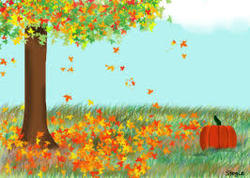 A chill is in the air and the leaves are slowly changing, creating bursts of color here and there. I finally gave in yesterday and turned the heat on in my home for a short while just to get rid of the rawness. It was also time to make a big vat of my popular vegetable soup. I loaded up the pot with carrots, turnips, parsnips, celery, squash, shallots and onion and let it simmer for about 90 minutes adding dill and parsley for the last 20 minutes. I then pureed it all and poured it back into the pot. Peas, corn and beans were mixed into the puree, creating a very healthy and hearty soup! 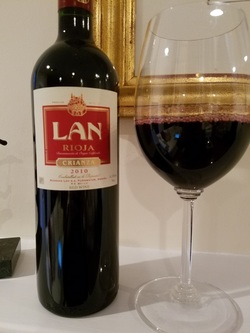 In anticipation of a Spanish wine tasting I will be attending next week, I opened a 2010 Lan Crianza Tempranillo from Rioja, Spain to serve with the soup. The wine is 100% Tempranillo grapes and aged for one year in oak barrels that are American and French oak incorporated into one barrel. This full-bodied wine had intense aromas of cherry, spice and hints of floral. The palate offered cherry, red berries, silky tannins and hints of oak and vanilla on the finish. It was a good pick for the soup! Everyone enjoyed it! Alcohol: 13.5% Price: About $14 http://www.bodegaslan.com  Now it’s time to make more pumpkin muffins! Someone has been eating them up! Have a great weekend!
Cheers! Penina It was a “feel good” day on Thursday. A portion of the day was spent with Otis, a service dog in training from Puppies Behind Bars. There is nothing like the unconditional love that these dogs give. I love volunteering and socializing these terrific pups!  Towards evening I met up with some friends for some fun banter and light fair. I tasted a 2014 Bodegas Muga Blanco from Rioja, Spain. The wine is a blend of 90% Viura and 10% Malvasia grapes. Gold in color with a green tinge to it, this was a light and crisp wine. The nose offered apple, honey and citrus that carried through to the palate. Pear and spice slid into a surprisingly long finish. Very nice! http://www.bodegasmuga.com It’s hard to believe that the weekend is already here. What will you be eating and drinking? Please share!
Happy Friday! Cheers! Penina  It was a busy Wednesday and in between dealing with business, I was on a search for fresh escarole. None was to be found. It seems that due to the weird weather we’ve been experiencing, the winter crops are not fairing well and most markets aren’t selling escarole right now. I was hoping to put together a pasta dish of sautéed escarole, cannellini beans and shrimp. So, I improvised and used broccoli rabe, which actually ended up giving the dish a little more dimension. We started the meal with a small serving of Tomato Basil Bisque and homemade peasant bread. 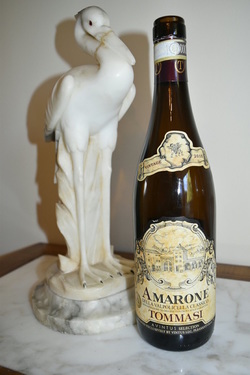 Prior to serving the soup, I opened a bottle of 2010 Tommasi Amarone della Valpolicella Classico. Instead of rich dark fruit aromas, there was an overwhelming mustiness that carried over to the palate. By the time we finished our soup, the wine had developed a small trace of cherry and plum on the palate with the mustiness still in the forefront. I was disappointed to say the least, but it was not worth waiting to see if the wine got any better. So we left “Italy” and traveled to “Spain” and opened a 2009 Bodegas San Prudencio Depadre Rioja. I reviewed this wine in June and it was even better than I remembered. My previous review: “The color was a dark Syrian amethyst with heady aromas of dark fruits and floral bouquet. Made from Tempranillo and Garnacha, this multi-layered wine exploded on the palate with blackberry, cherry, anise, espresso beans and a hint of vanilla. It was quite impressive with a long finish. This is a wine with a lot of character and depth.” And, it is a full-bodied wine with medium tannins. Alcohol: 13.5%. http://bodegasanprudencio.es The wine paired well with the rest of the meal. Happy Thursday!
Cheers! Penina  I’m back! I took a few days longer than anticipated to bask in some much-needed R and R. Upon my return to the land of reality, I was inundated with wonderful visits from friends and family. 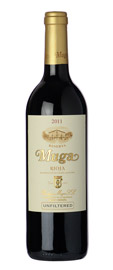 In addition to many holiday treats, one of my visitors brought over a Bodegas Muga Reserva 2011 from Rioja, Spain that he thought worth tasting. Made mostly with Tempranillo grape, it also has a little Garnacha, Graciano and Mazuelo grape mixed in. Everything is fermented in oak vats and then aged for one year in new French oak barrels and yet another year in used ones. Needless to say, this ruby colored wine had heady oak aromas along with spices and dark fruit. The palate was medium bodied with dark cherry, plum, pepper, cloves and a hint of vanilla. Tannins were soft and the finish was long. The roaring fire, company and tapas rounded out the tasting experience! http://www.bodegasmuga.com I have much to catch up on and will do so over the next few posts.
Have a great Tuesday! Cheers! Penina |
Categories
All
|

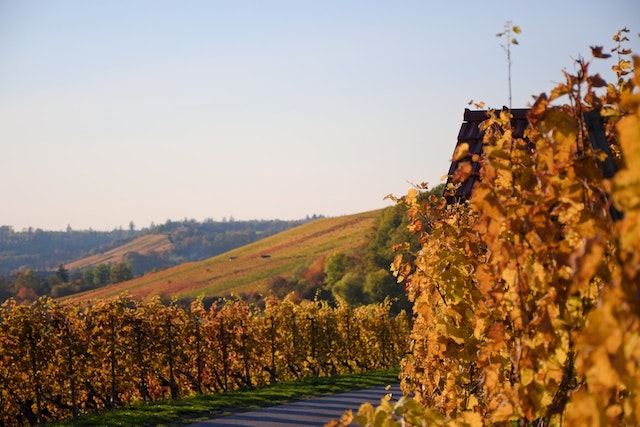
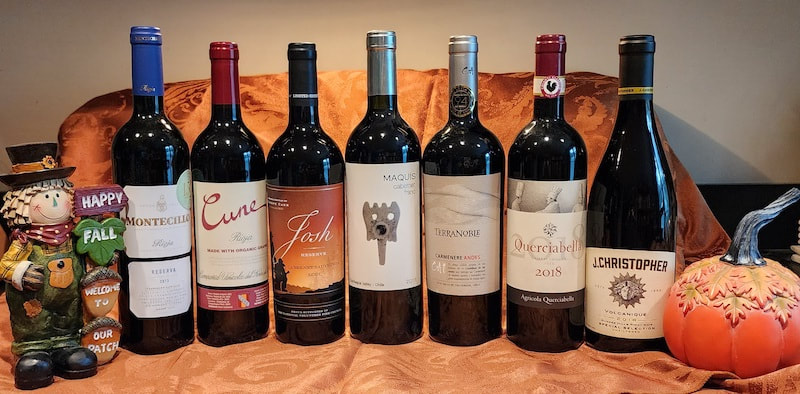
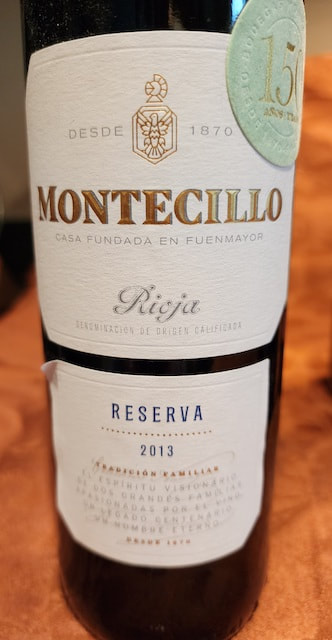
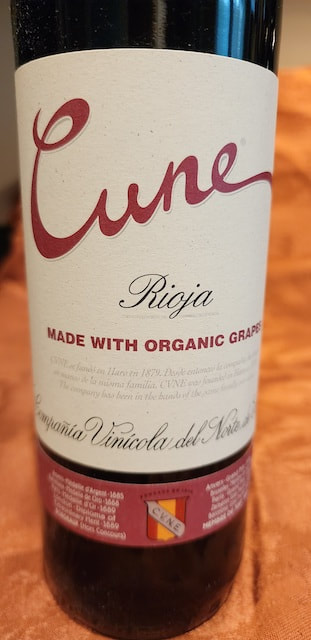
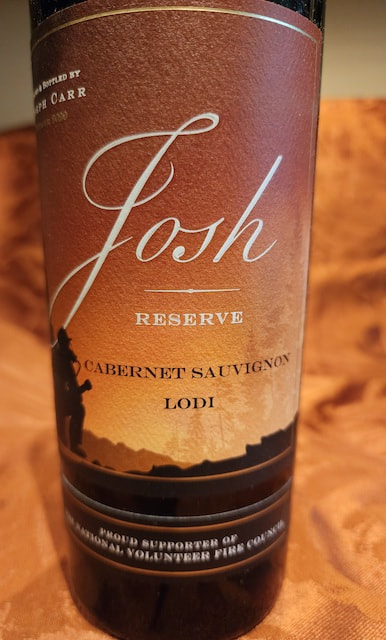
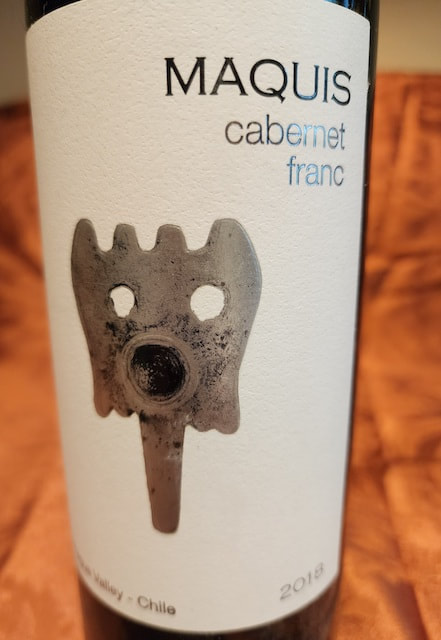
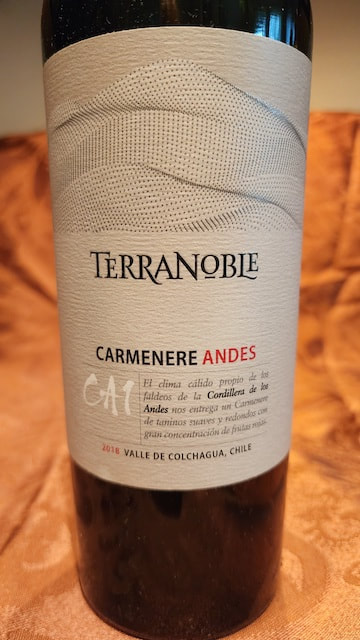
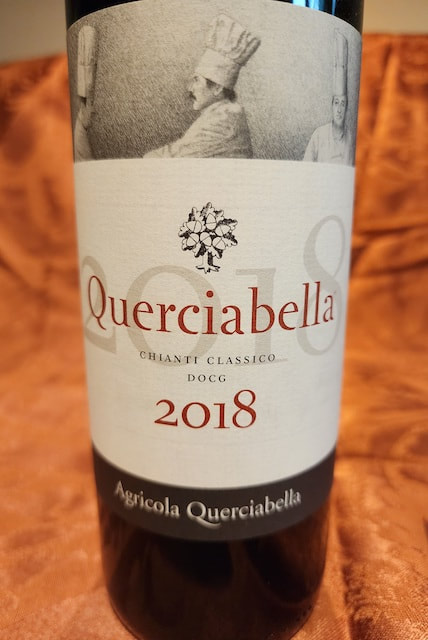
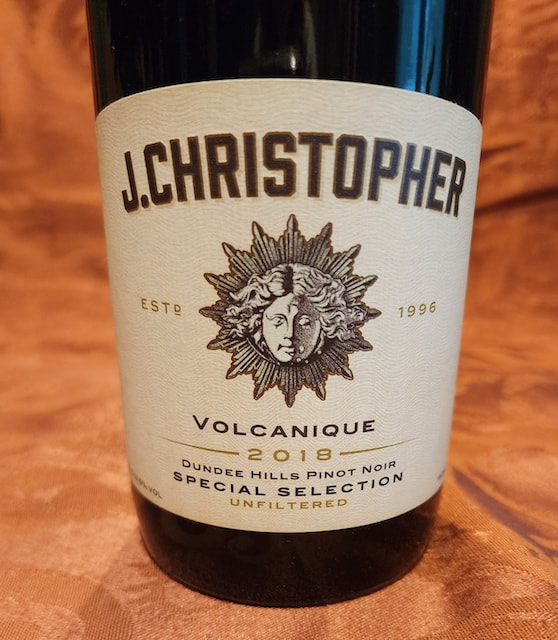
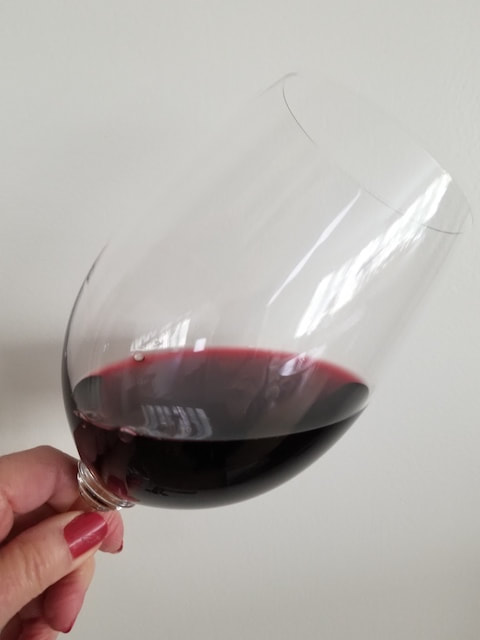
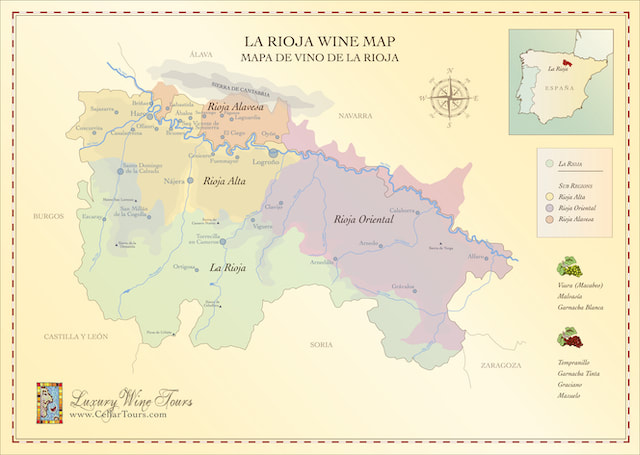
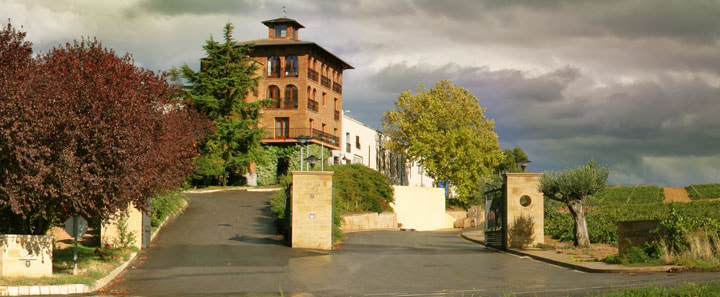
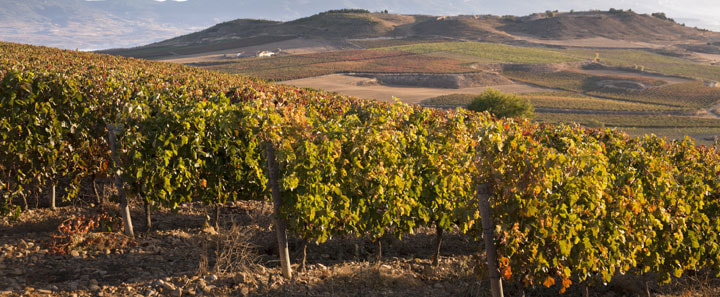
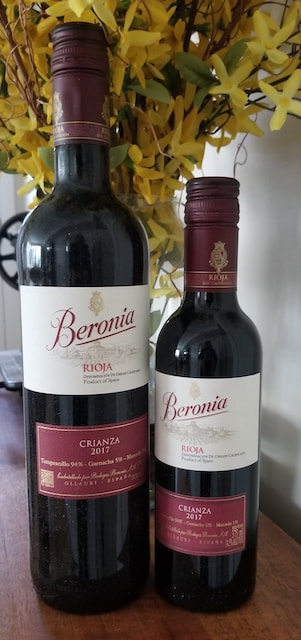
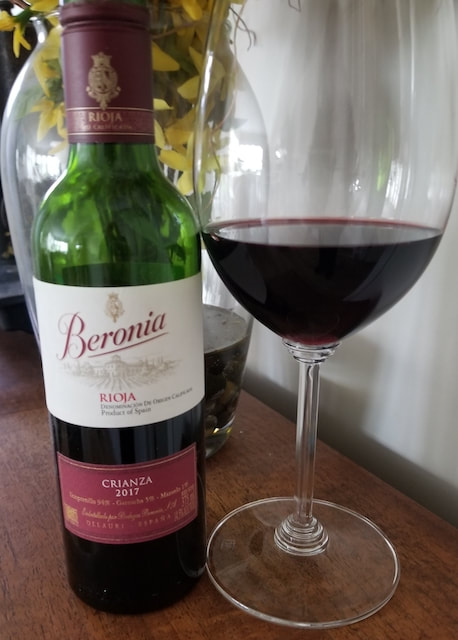
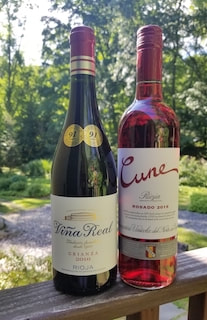
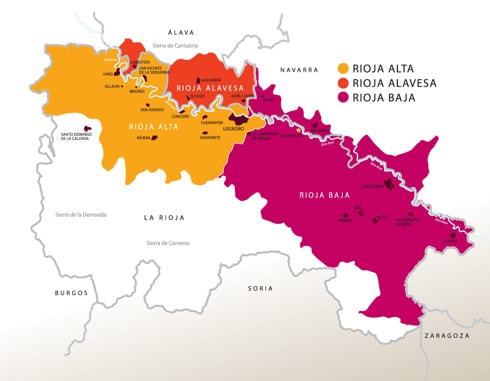
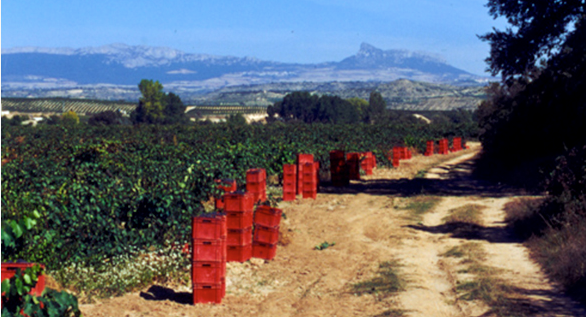
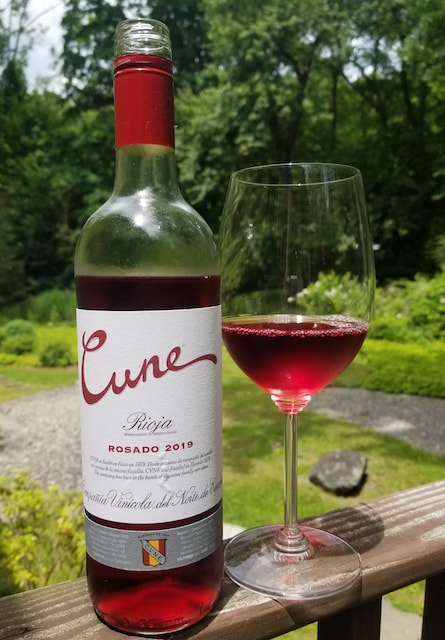
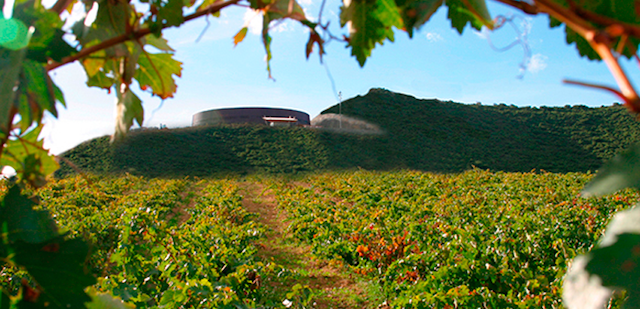
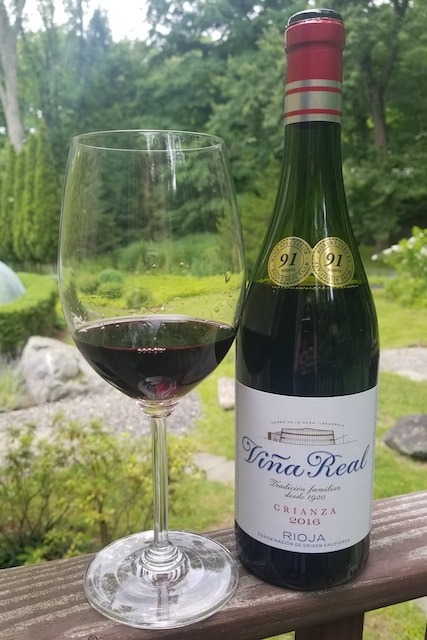
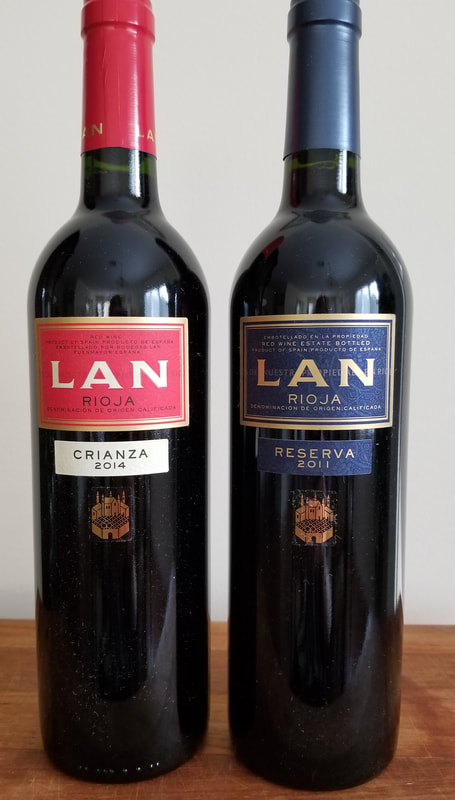
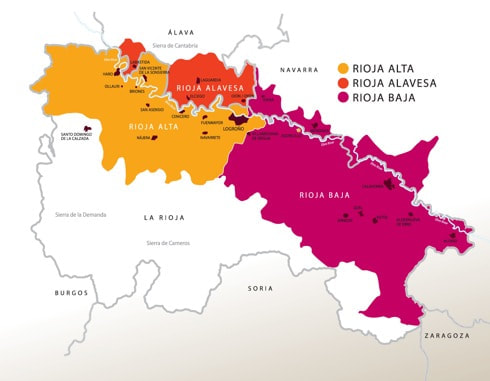
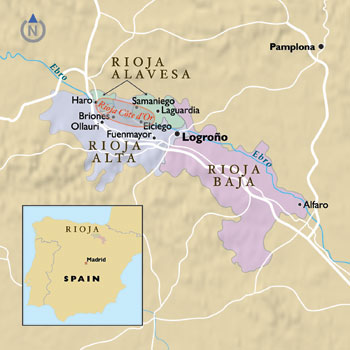
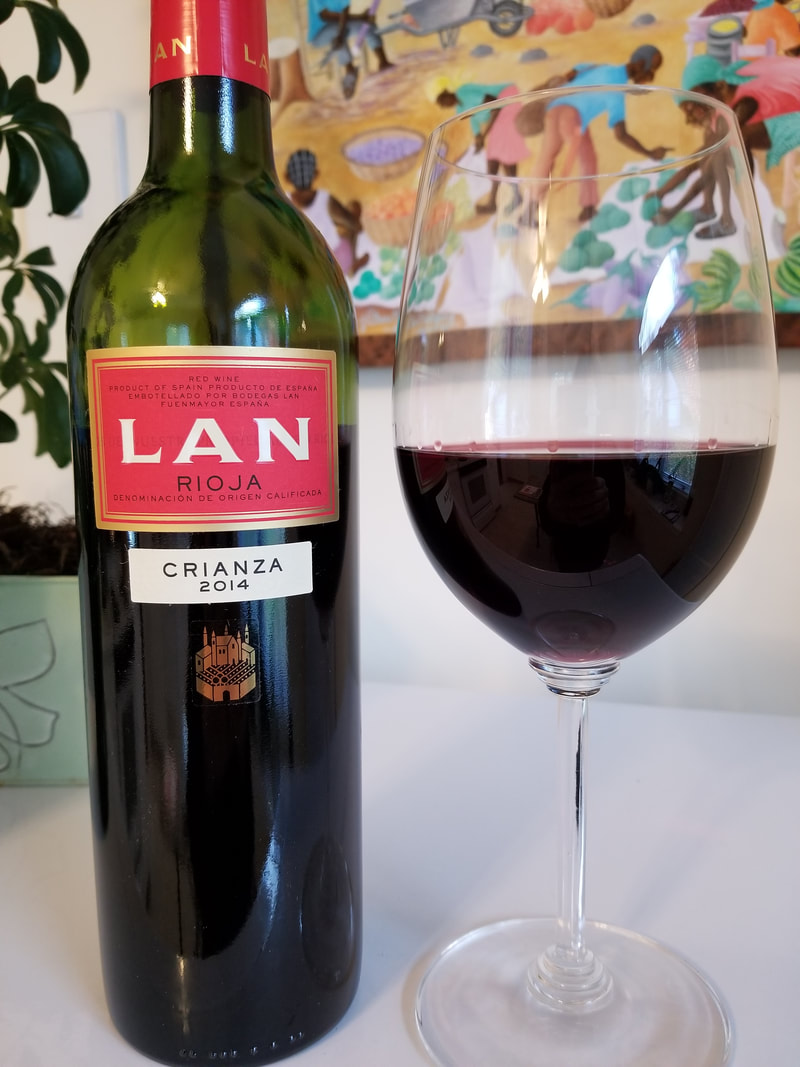
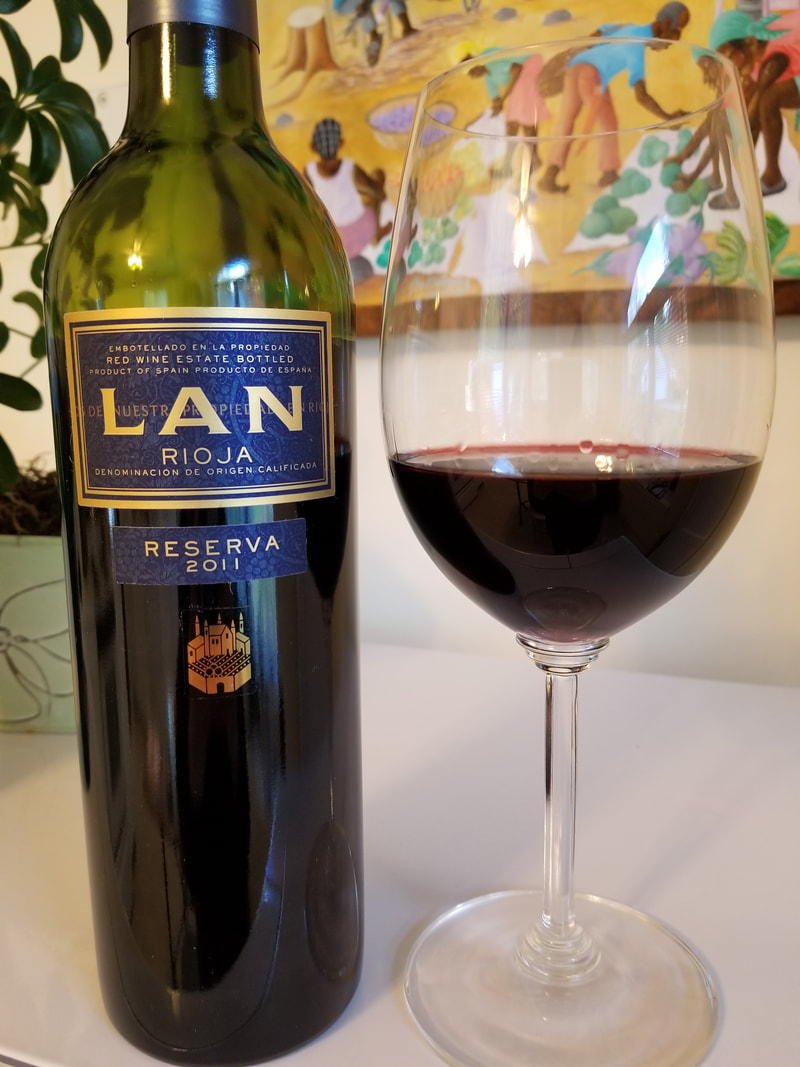
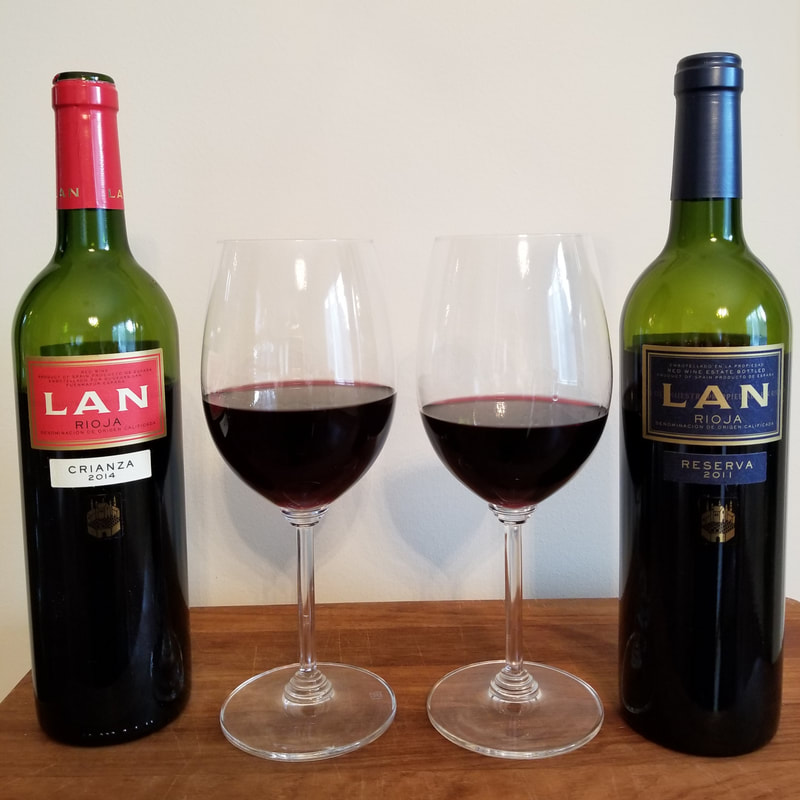
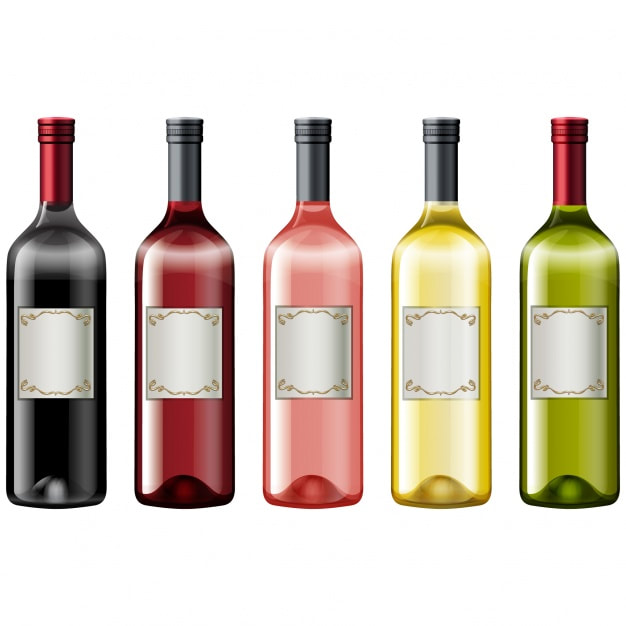
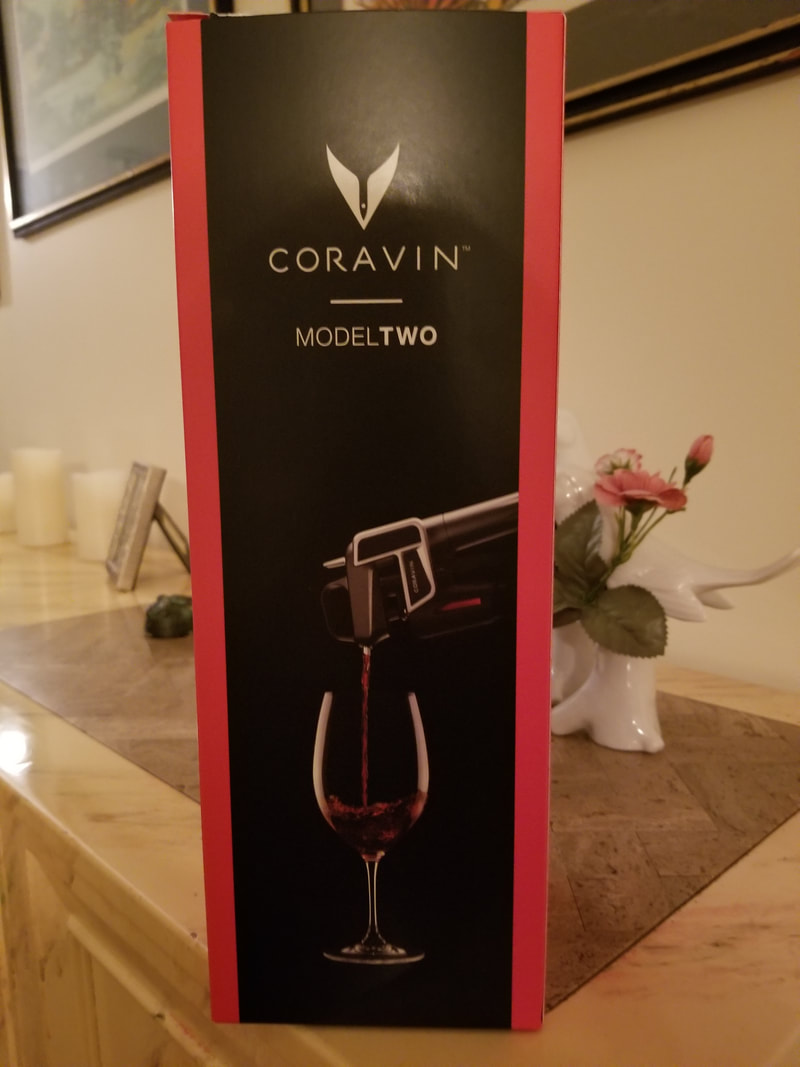
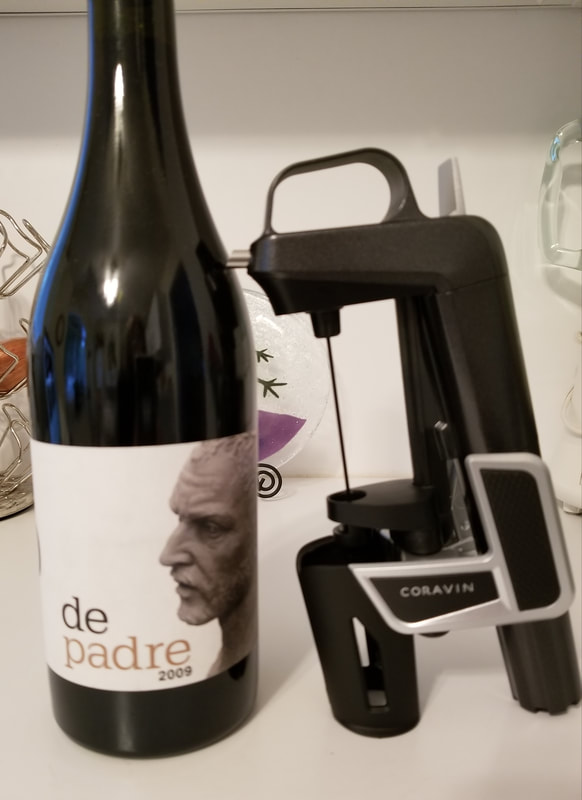
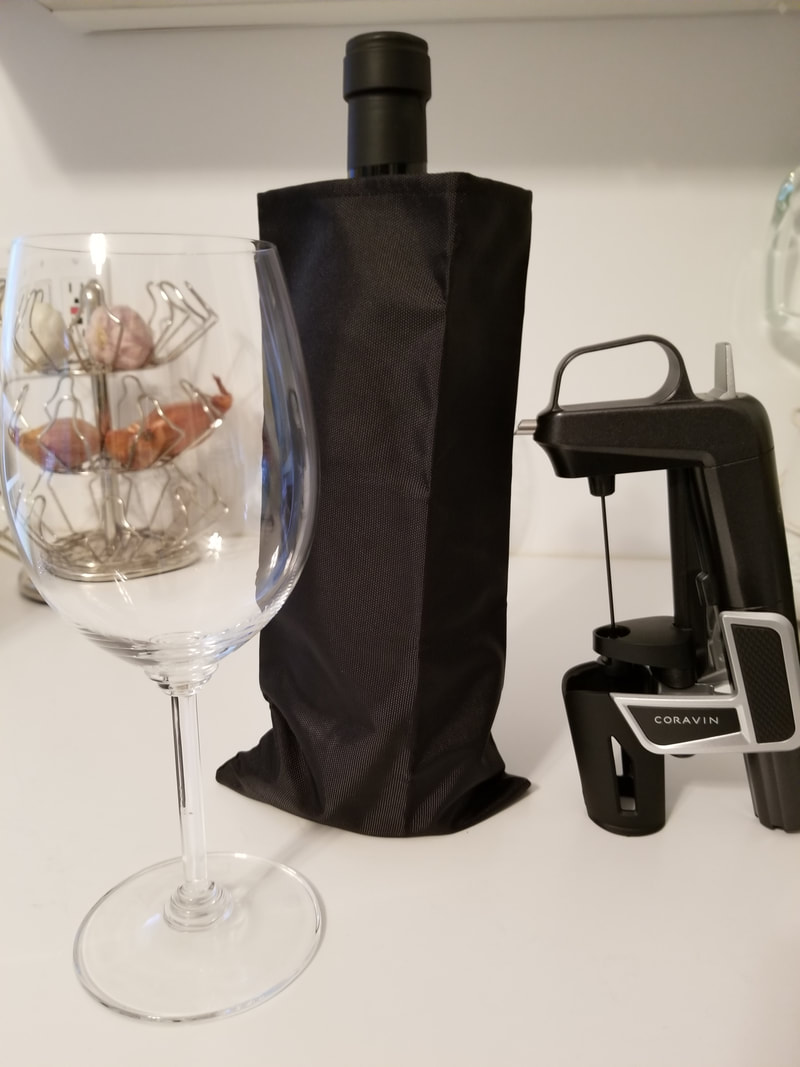
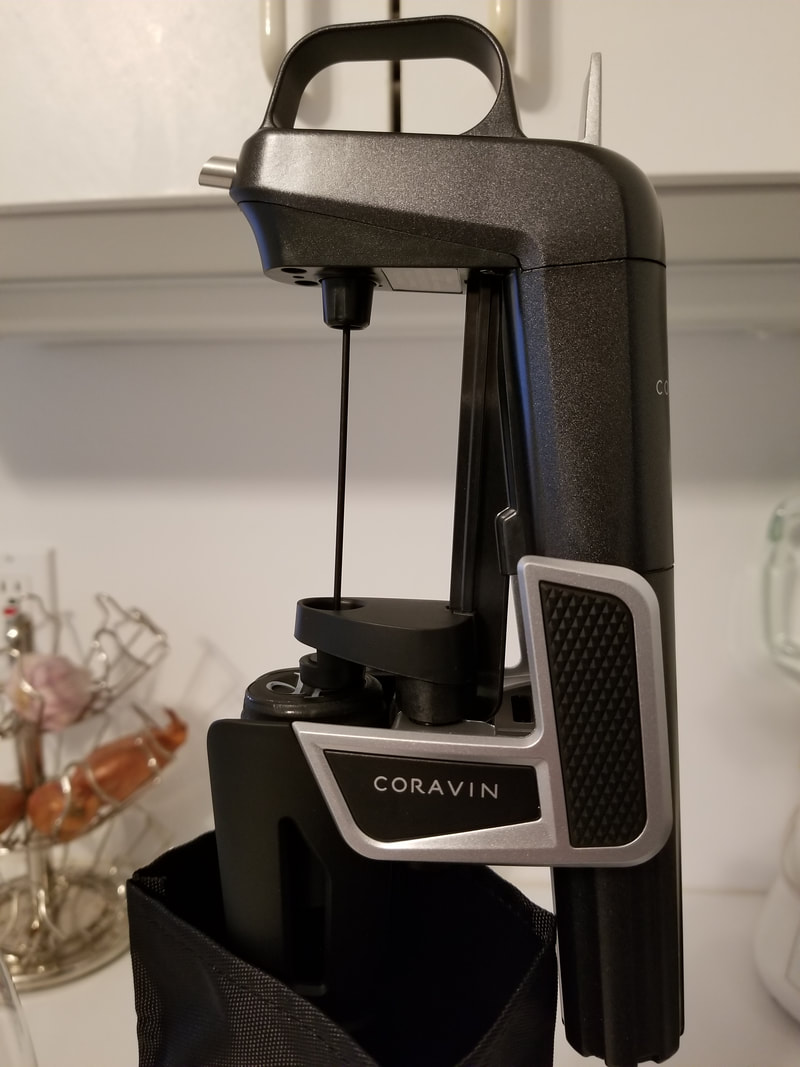


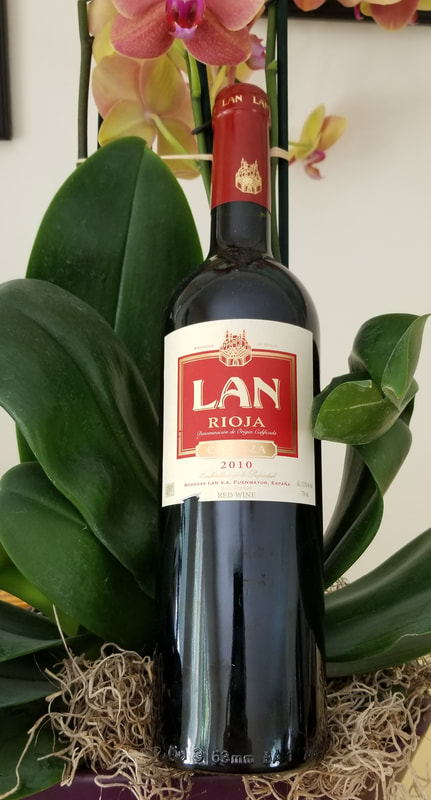
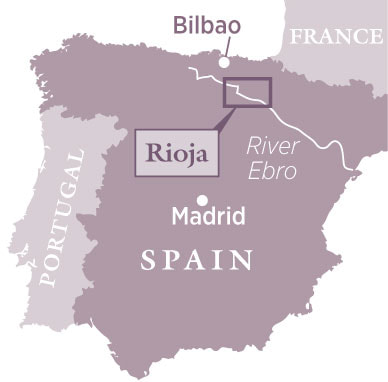
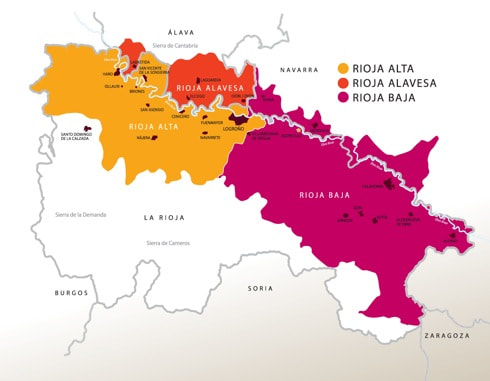
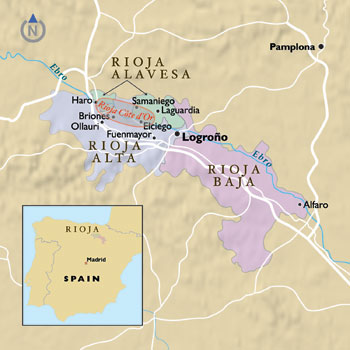
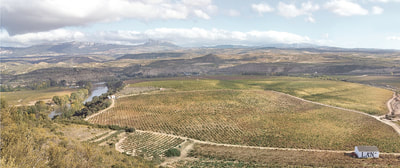
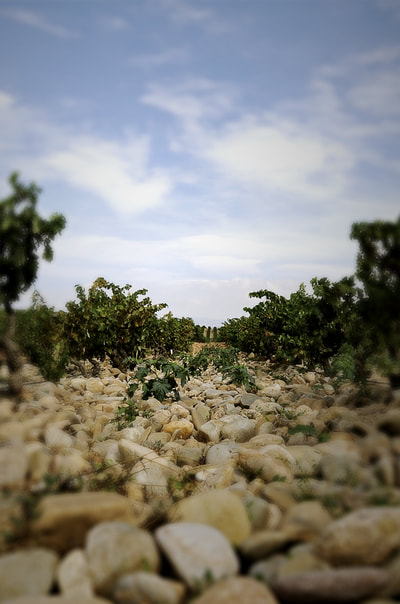
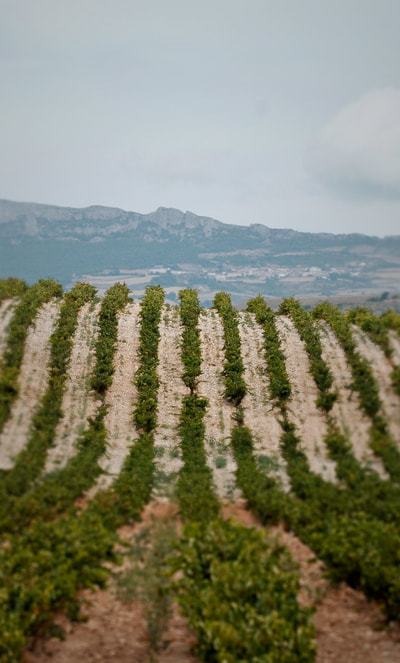

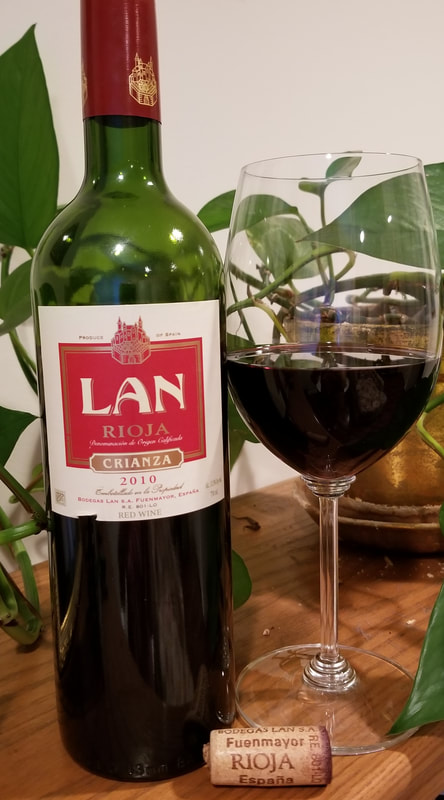
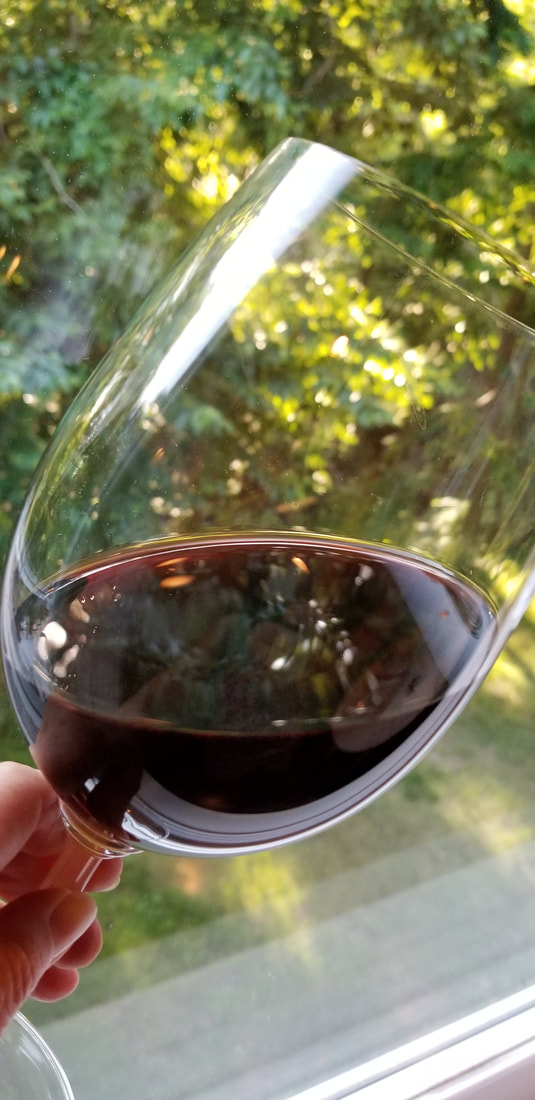
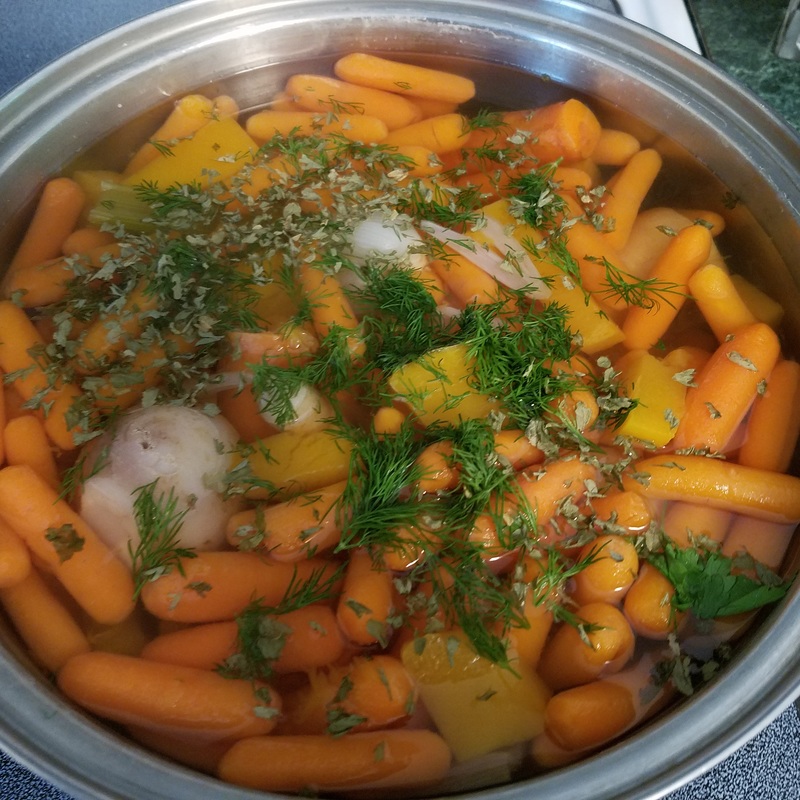
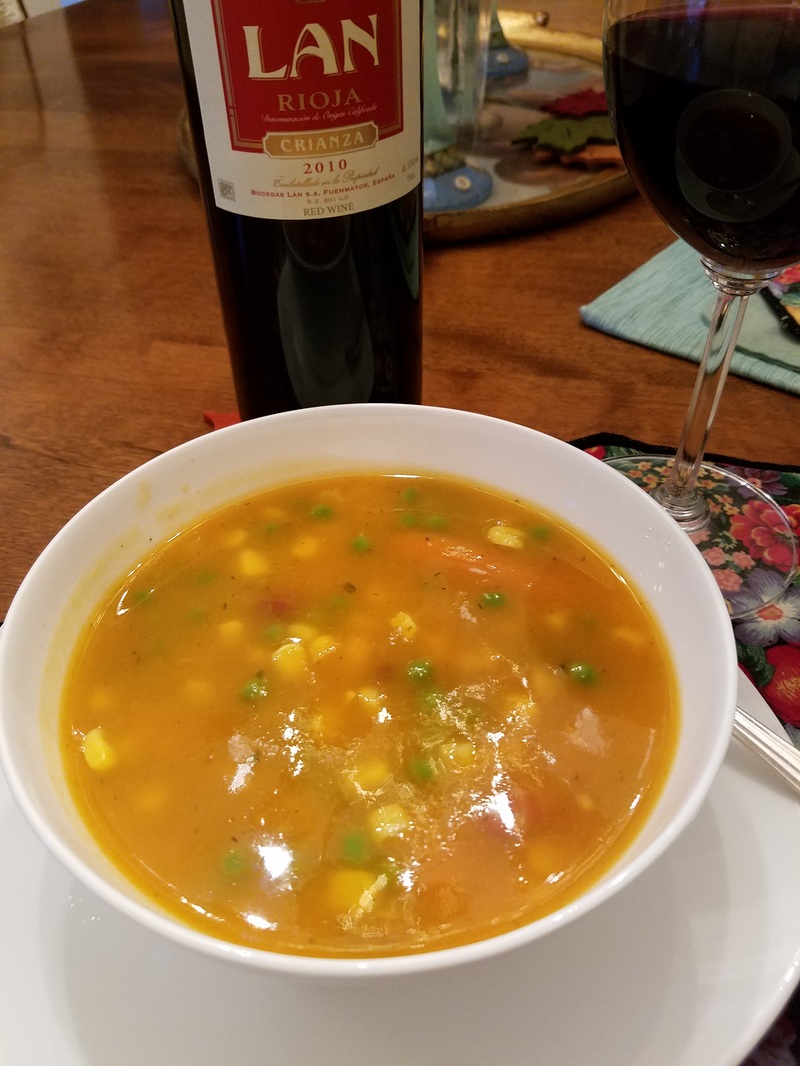
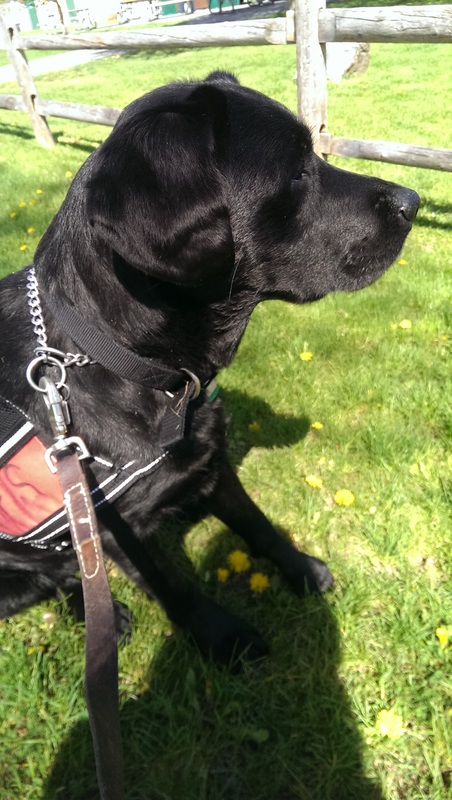
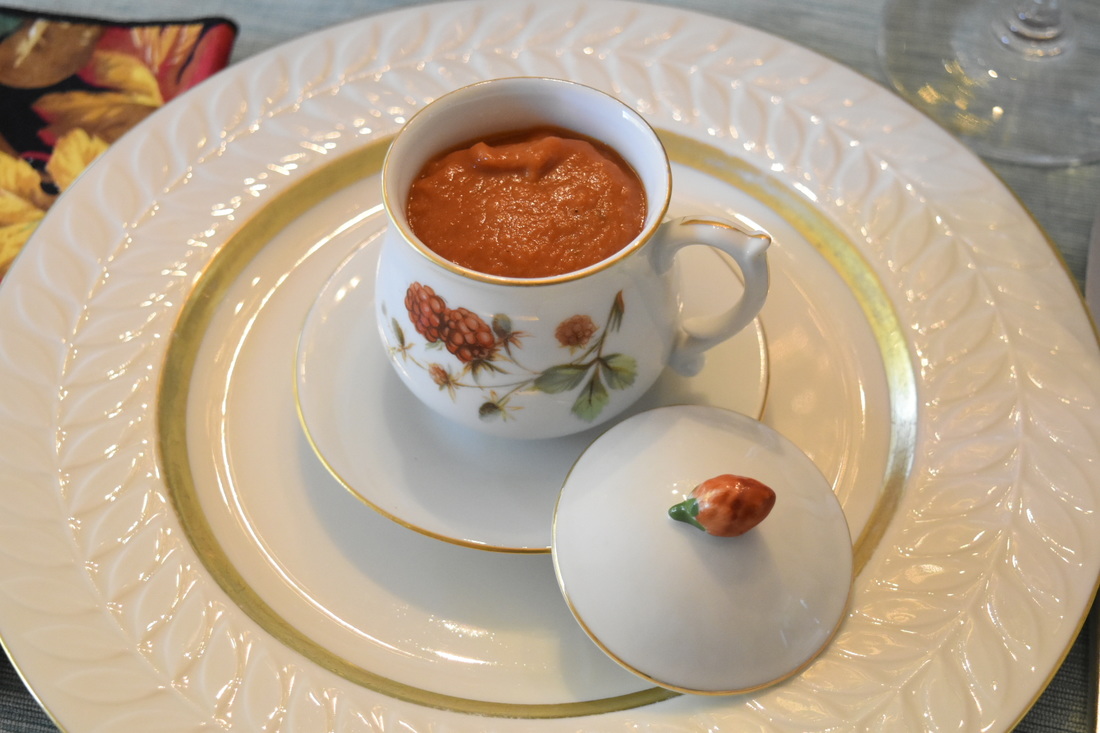
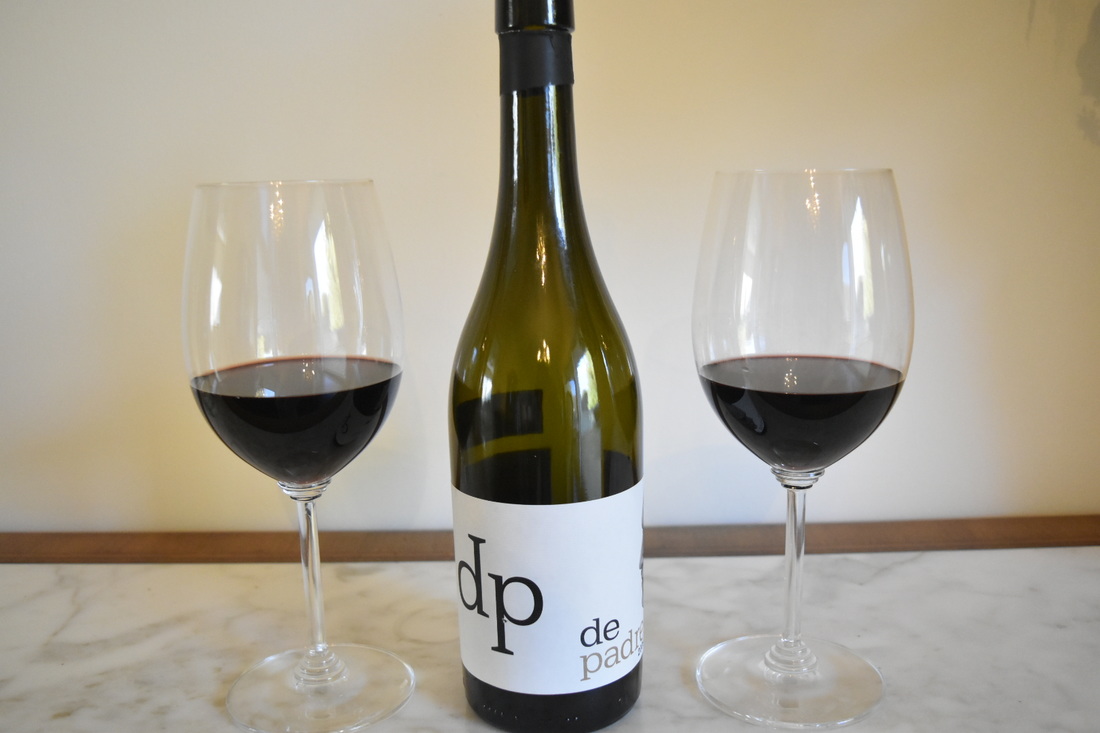
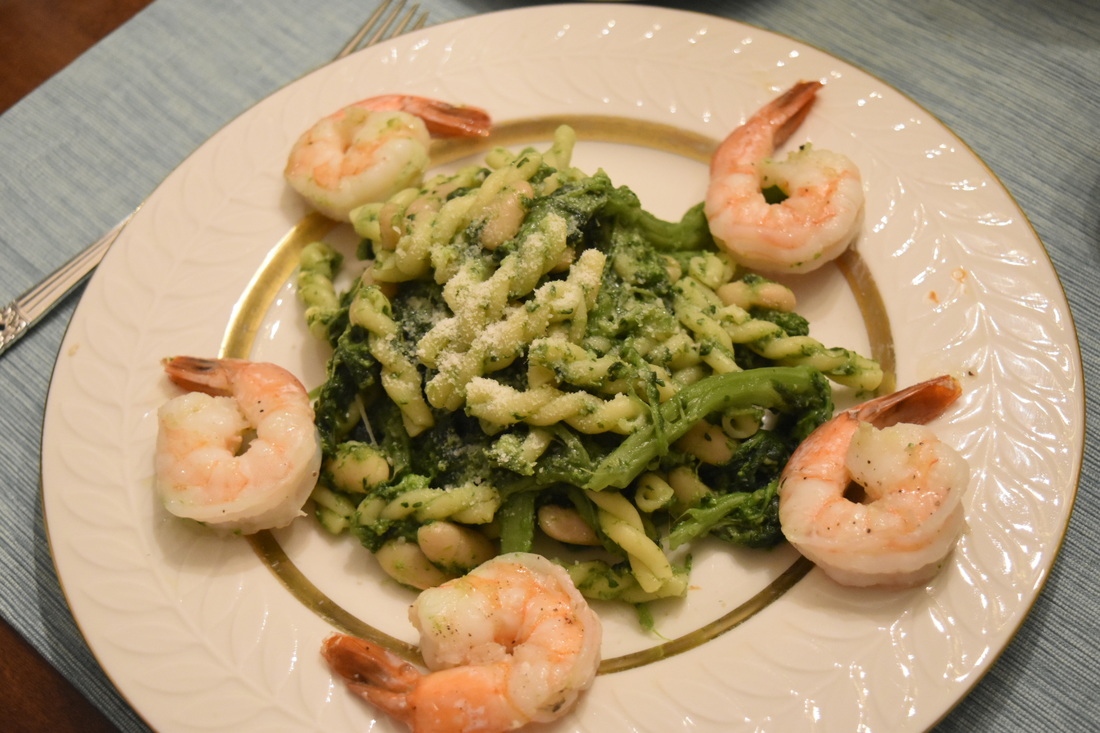
 RSS Feed
RSS Feed